Losar festival, the Tibetan New Year, is one of the most vibrant and culturally rich festivals celebrated across the Himalayan belt. From the high-altitude deserts of Ladakh to the lush valleys of Arunachal Pradesh and Sikkim, Losar brings together communities with ancient rituals, folk dances, traditional food, and deep-rooted spiritual significance. Though the date of Losar varies from December to March depending on the region and lunar calendar, the spirit of the festival remains the same: to welcome the new year by casting away the old and seeking blessings for the year ahead.
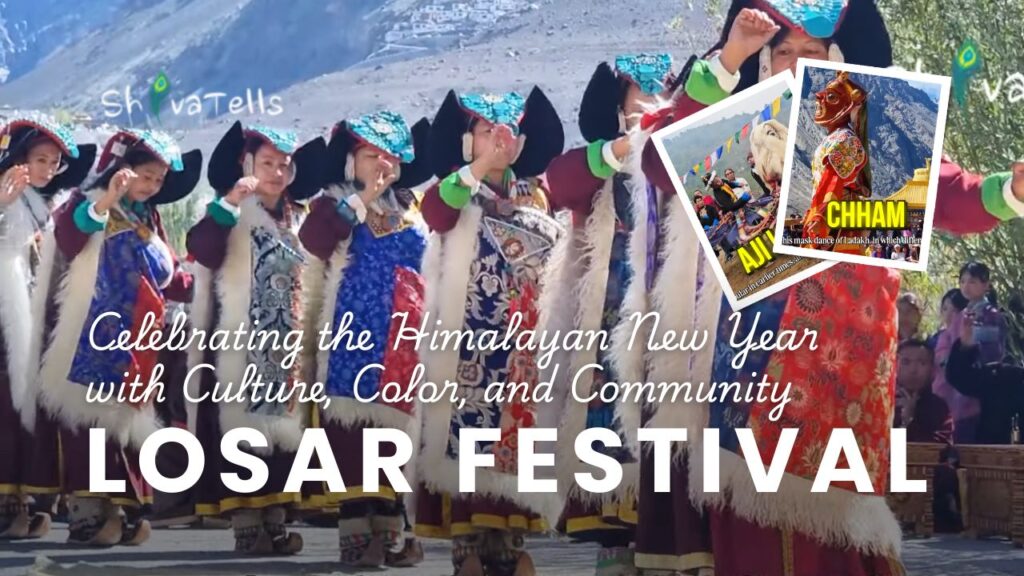
Table of Contents
Where Is Losar Festival Celebrated in India?
In India, Losar is prominently celebrated in:
- Ladakh (around December–January)
- Arunachal Pradesh (mainly in Tawang and West Kameng, around February–March)
- Sikkim
- Spiti Valley in Himachal Pradesh
Each region adds its own flavor through folk tales, local dances, rituals, and even variations in cuisine and dress.
Losar Festival in Ladakh: Mask Dances and the Cham Ritual
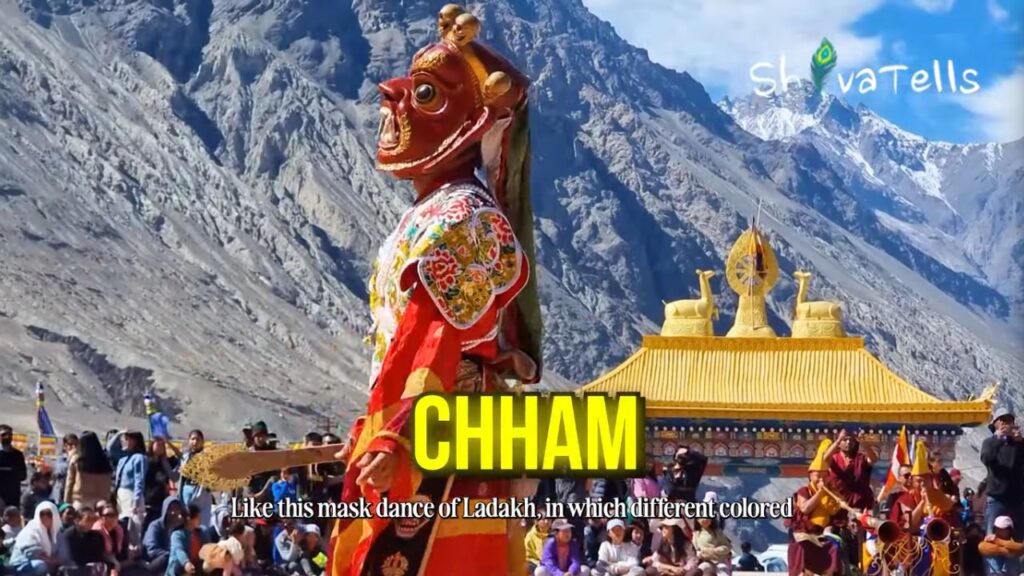
In Ladakh, the arrival of Losar is marked by the Cham Mask Dance, where monks dress in vibrant costumes and wear masks representing wrathful deities. These dances are not just for performance—they tell stories that reflect the battle between good and evil, aiming to clear negativity and invite harmony.
Another special tradition is the Shadoll dance, performed before the king and considered highly auspicious. Families prepare special offerings, decorate their homes, and pray in Buddhist monasteries to mark the beginning of a new cycle.
Watch More Shivatells’ Stories From Ladakh
Losar Festival in Arunachal Pradesh: Ajilamu Dance and Monpa Traditions
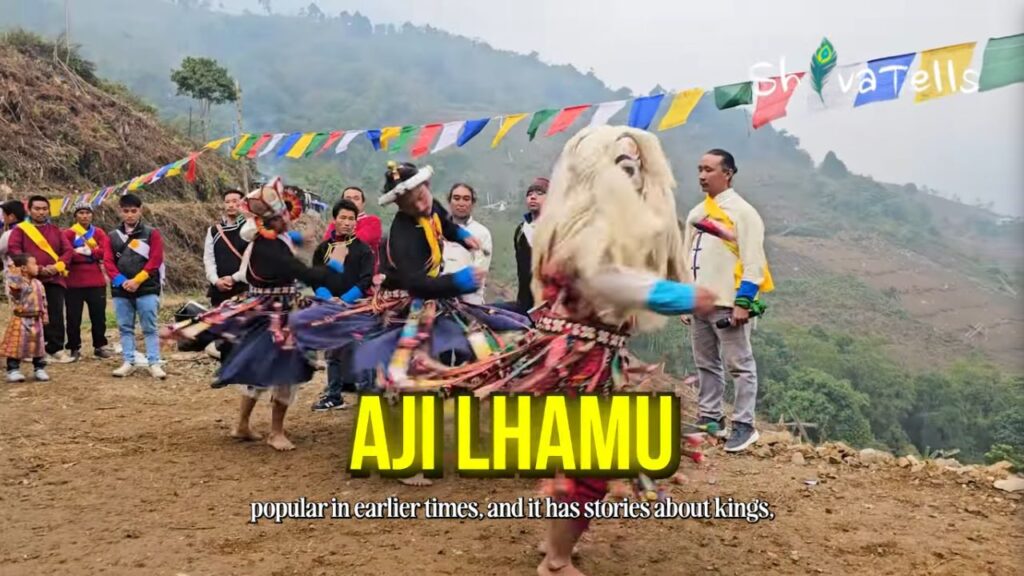
I had the chance to witness Losar celebrations in Arunachal Pradesh, where the Monpa community celebrates the festival with equal devotion and colorful traditions. Unlike Ladakh, where the Cham dance dominates, here the highlight is the Ajilamu dance—a folk theatre that used to run for days, narrating stories of kings, villagers, and even a local version of the Ramayana.
Women dressed in Shanka (traditional attire) perform sacred dances, while elders lead rituals to honor ancestors and deities. The celebration continues for 15 days, with the first three days focusing on temple worship, family blessings, and community feasting.
Watch More Shivatells’ Stories From Arunachal Pradesh
Spiritual Welcome: Rituals and Community Bonding
When I arrived in Sangilam village, I was welcomed with a traditional white scarf (khatak) and a timri ritual to ward off the evil eye. Inside their homes, families had set up elaborate prayer rooms, preparing offerings of Prashi, Behra, and local brews.
On the first day, prayers are held at the main monastery. On the second day, younger family members visit their elders to seek blessings. By the third day, village leaders, officials, and neighbors are honored. The celebrations then continue with feasts, music, and rituals.
Traditional Food During the Losar Festival: From Bope to Wild Mushrooms
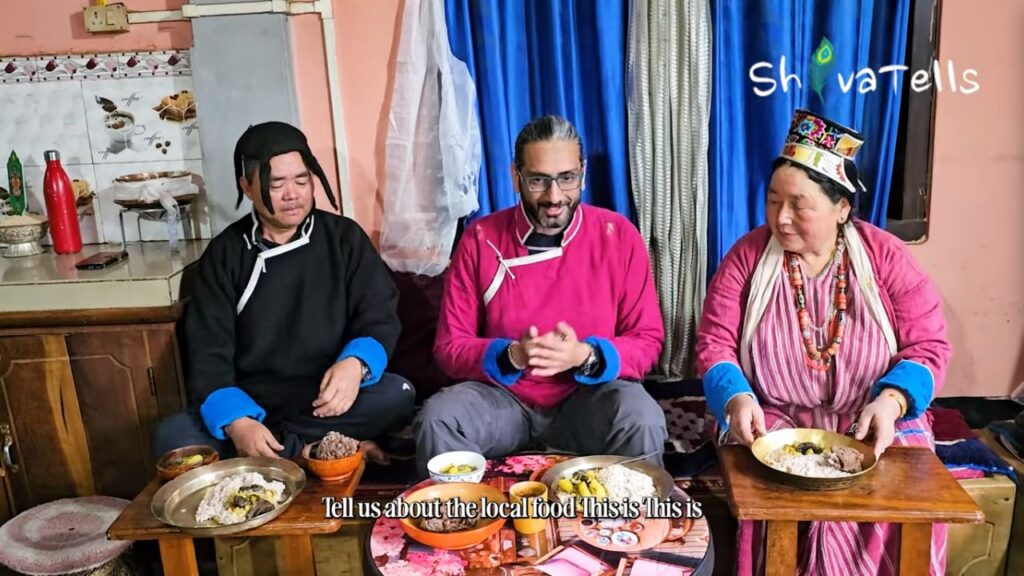
Food is central to the Losar festival. In one home, I was treated to:
- Bope: A thick buckwheat pancake
- Chur: A hearty local vegetable dish
- Bambu Mushrooms: Fresh wild mushrooms collected from nearby forests
- Local Rice and Brewed Drinks: Served with pride and hospitality
These dishes are not just meals—they are symbols of tradition, self-sufficiency, and community bonding.
The Tradition of Archery in Warangpam Village
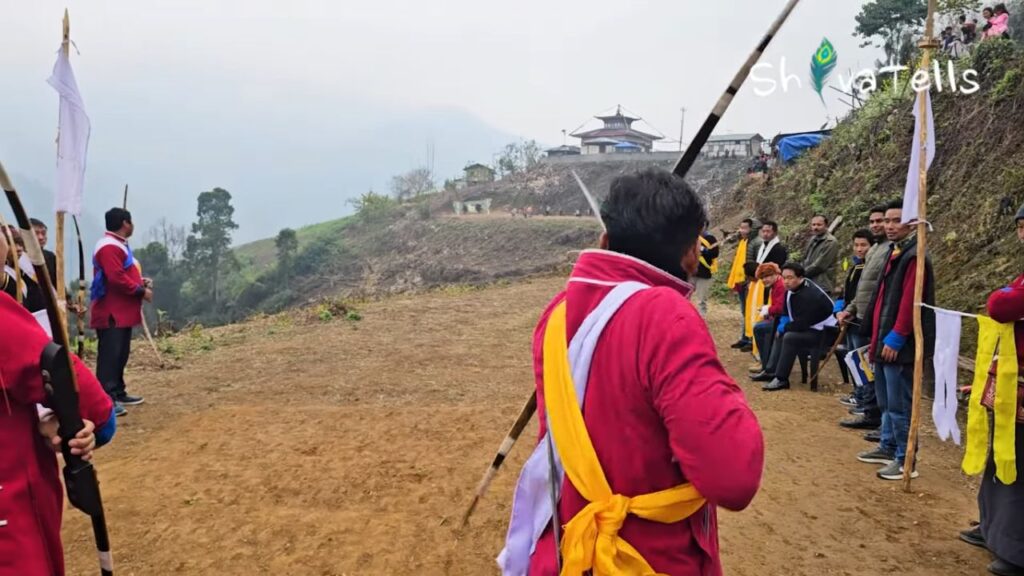
One of the most fascinating parts of my journey was a visit to Warangpam village, near the Bhutan border. Here, I witnessed traditional archery or Dimit, an important part of Losar in this region.
The villagers explained that this tradition connects to King Ling Gesar, a legendary warrior figure in Tibetan culture often compared to Lord Ram. Through archery contests, the community honors the victory of good over evil, a core theme of Losar. Archery is not just a sport but a spiritual practice and cultural heritage passed down through generations.
Chang and Lem Chang: The Rituals of Welcome
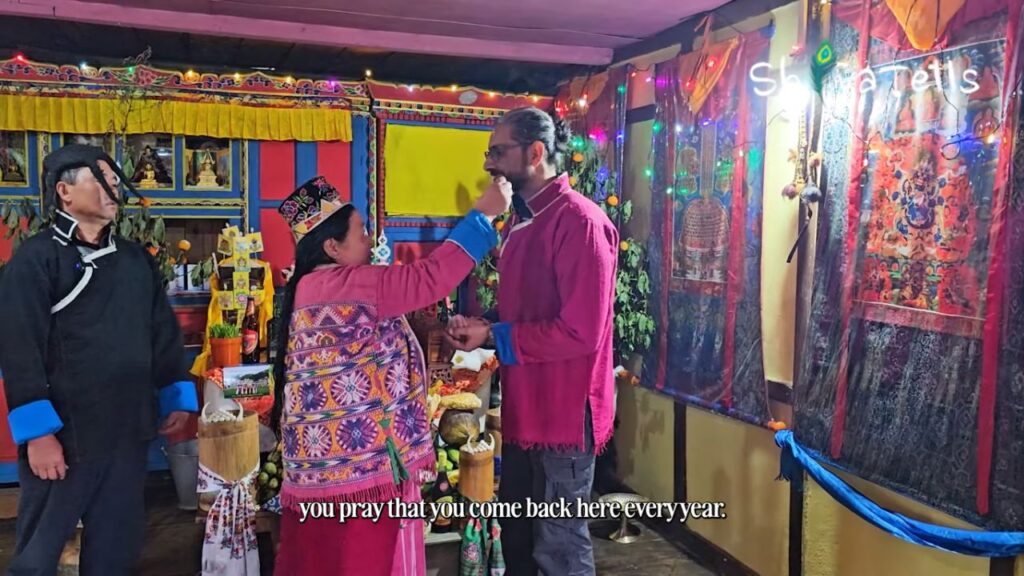
Another heartwarming custom is the ritual of Lem Chang, where villagers stand by the roadside to offer Ara or Chang—a locally brewed rice beer. As per custom, visitors are encouraged to drink it three times. Sometimes it’s mixed with ghee or sandalwood. It’s more than a welcome drink—it’s a blessing.
Community Life During Losar: A Joyful Pause
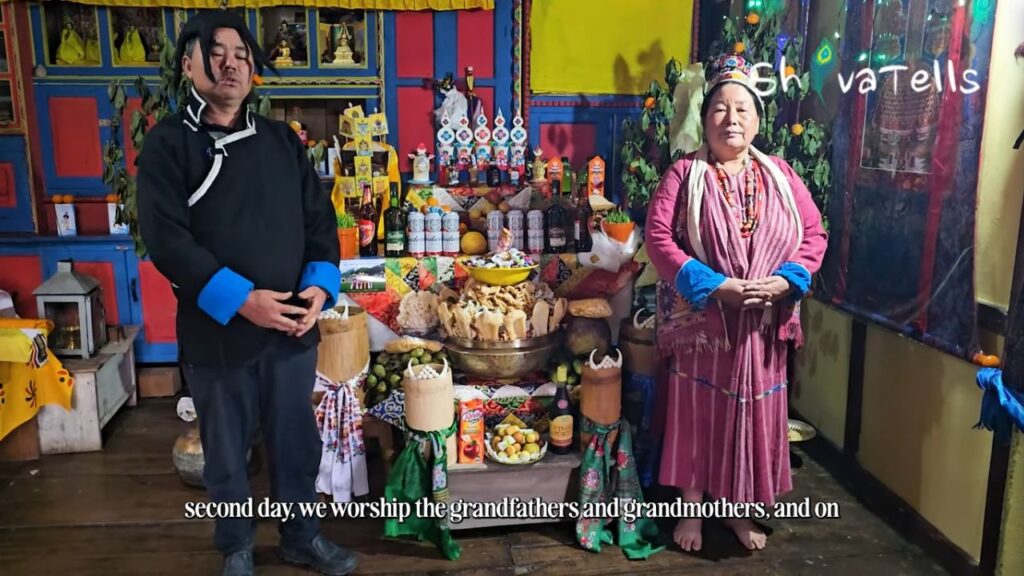
Losar turns villages into celebration grounds. In the streets, people play games, sing traditional songs, and dance into the night. Some gamble, others picnic by the river, and families gather over karaoke and laughter.
The atmosphere is relaxed and full of love. As someone told me, “There are millions of kind hearts here, but love is hard to find.” That line stayed with me. Because in Losar, even if love is rare, kindness is everywhere.
How Losar Reflects Cultural Continuity
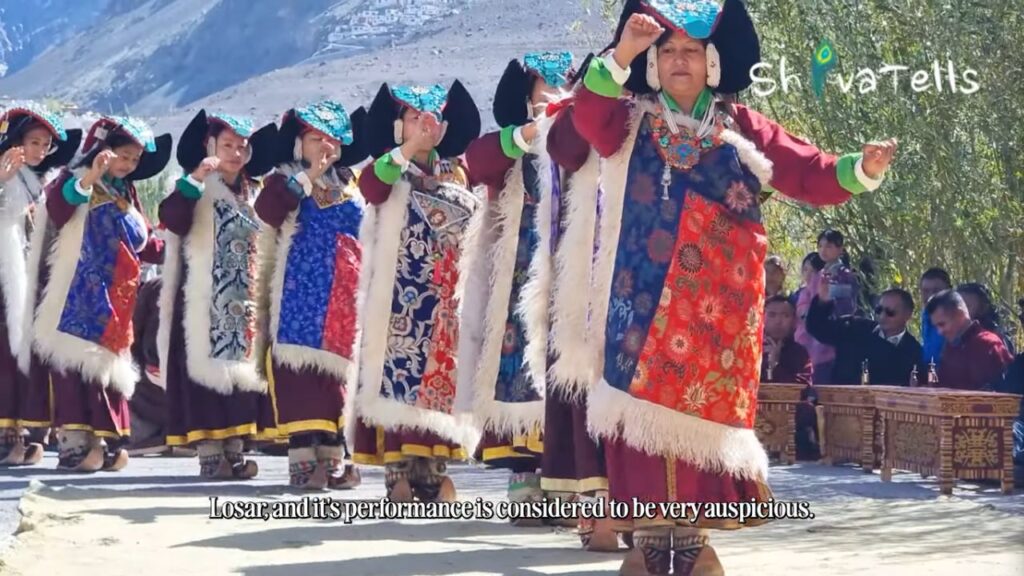
Losar festival is more than just a New Year celebration. It represents cultural continuity, ancestral connection, and the spiritual harmony that binds Himalayan communities. Even as modern influences reach remote villages, these rituals continue—holding space for identity, memory, and collective joy.
How to Reach the Losar Festival Regions

For Arunachal Pradesh Losar (Tawang/West Kameng):
- By Air: Tezpur Airport (Assam) is the nearest airport.
- By Road: Reach via Bhalukpong–Tawang highway. Shared taxis available.
- Permit Required: Indian tourists need an Inner Line Permit (ILP).
For Ladakh Losar:
- By Air: Leh Kushok Bakula Rimpochee Airport.
- By Road: Accessible by road from Manali and Srinagar (only in summer months).
Best Time to Experience the Losar Festival
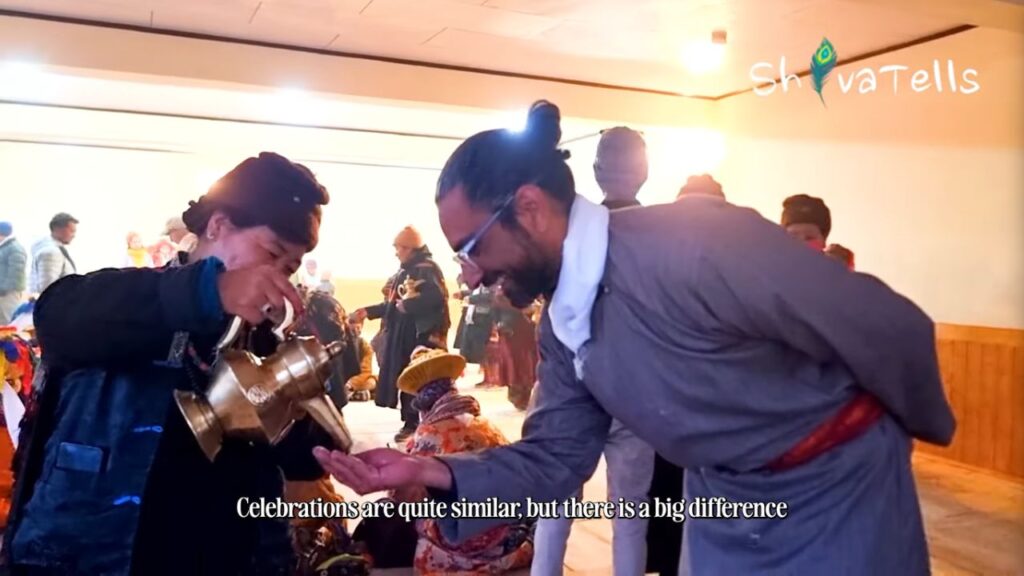
- Ladakh: December to January
- Arunachal Pradesh and Sikkim: February to March
Always confirm with local sources, as dates follow the lunar calendar and vary each year.
Travel Tips for Losar
- Be respectful during rituals—ask before taking photos.
- Dress warmly—high-altitude winters can be extreme.
- Join with a local guide or friend to get a deeper cultural insight.
- Carry cash—remote regions may have limited connectivity.
- If offered Chang or Ara, accept with grace—it’s part of the ritual.
Conclusion:
The Losar Festival is not just about ringing in a new year. It is a living museum of Himalayan life. From the mask dances of Ladakh to the archery traditions of Arunachal Pradesh, every part of Losar connects the present with a proud and poetic past.
I left with blessings, new friendships, and stories I’ll carry forever. If you’re a traveler seeking something real, raw, and rooted—Losar is a must-attend festival. I’ll be there again next year. Will you?
Happy Losar. Always Happy.
Read More Stories From ShivaTells
- Discovering Rajasthan’s Desert Villages: A Cultural and Historical Journey
- Trekking Tripura: Hidden Waterfalls, Wildlife, and Breathtaking Views
Watch Arunachal Pradesh Travel Stories –
